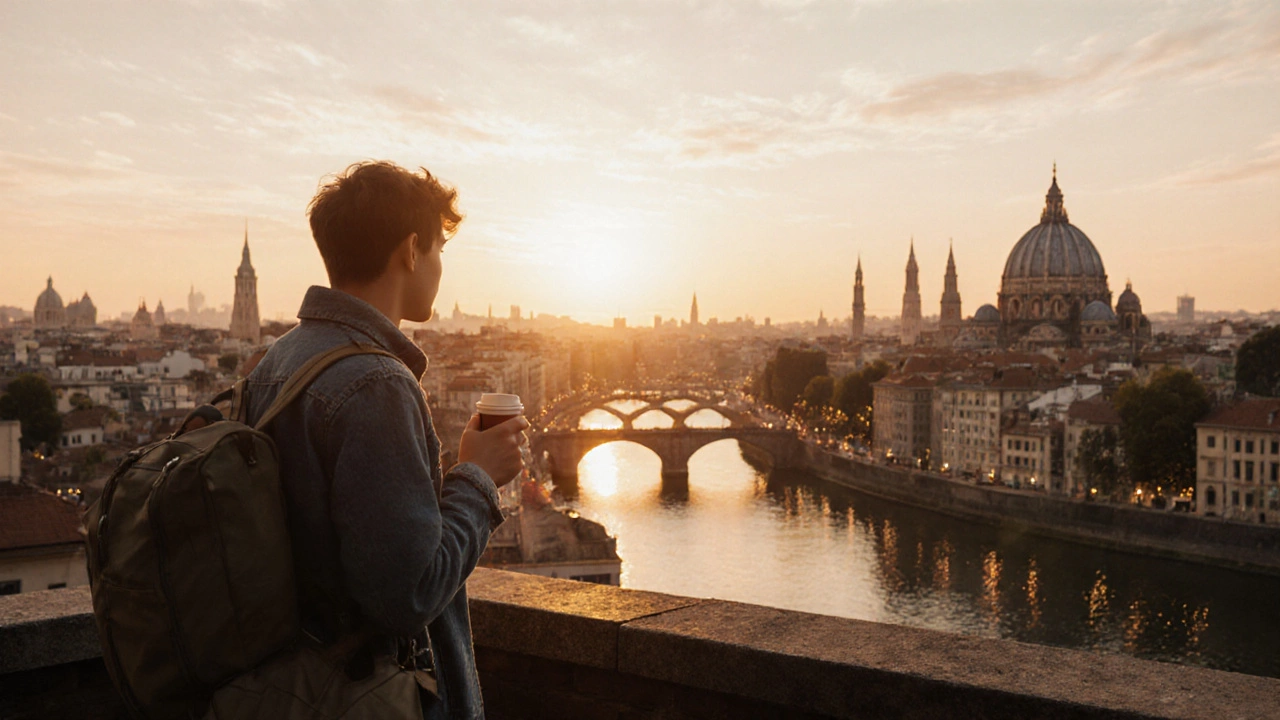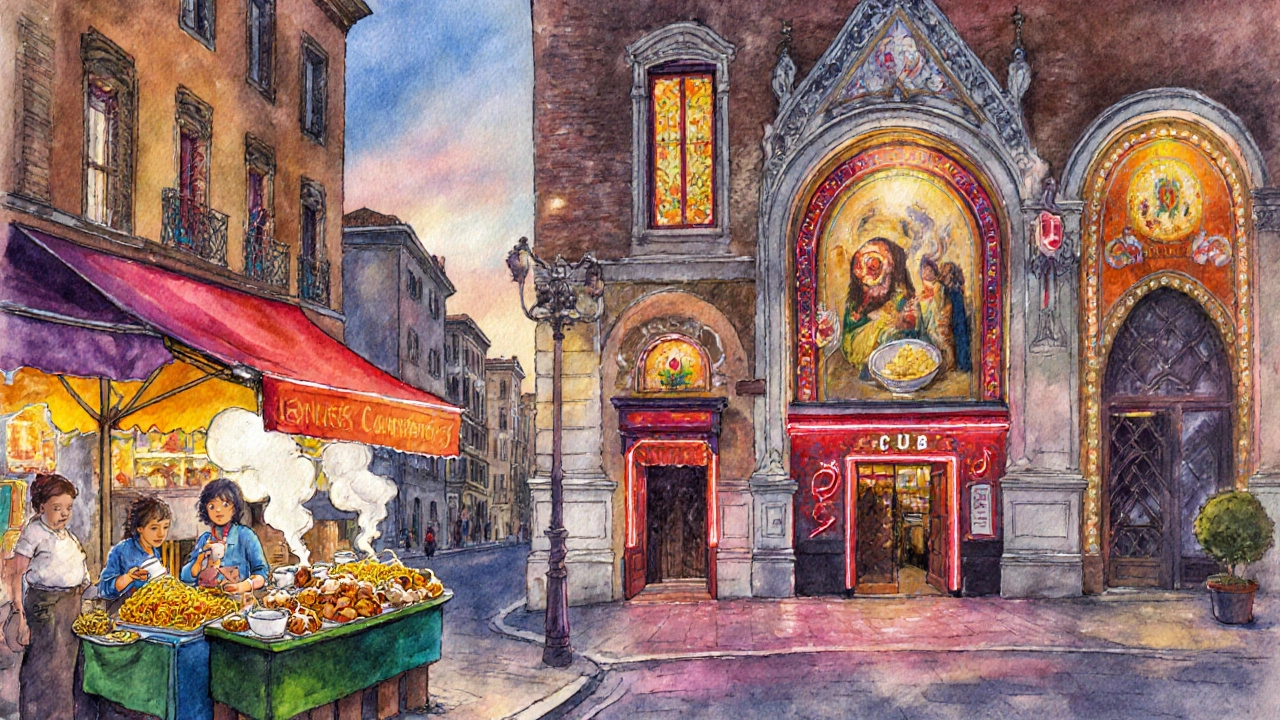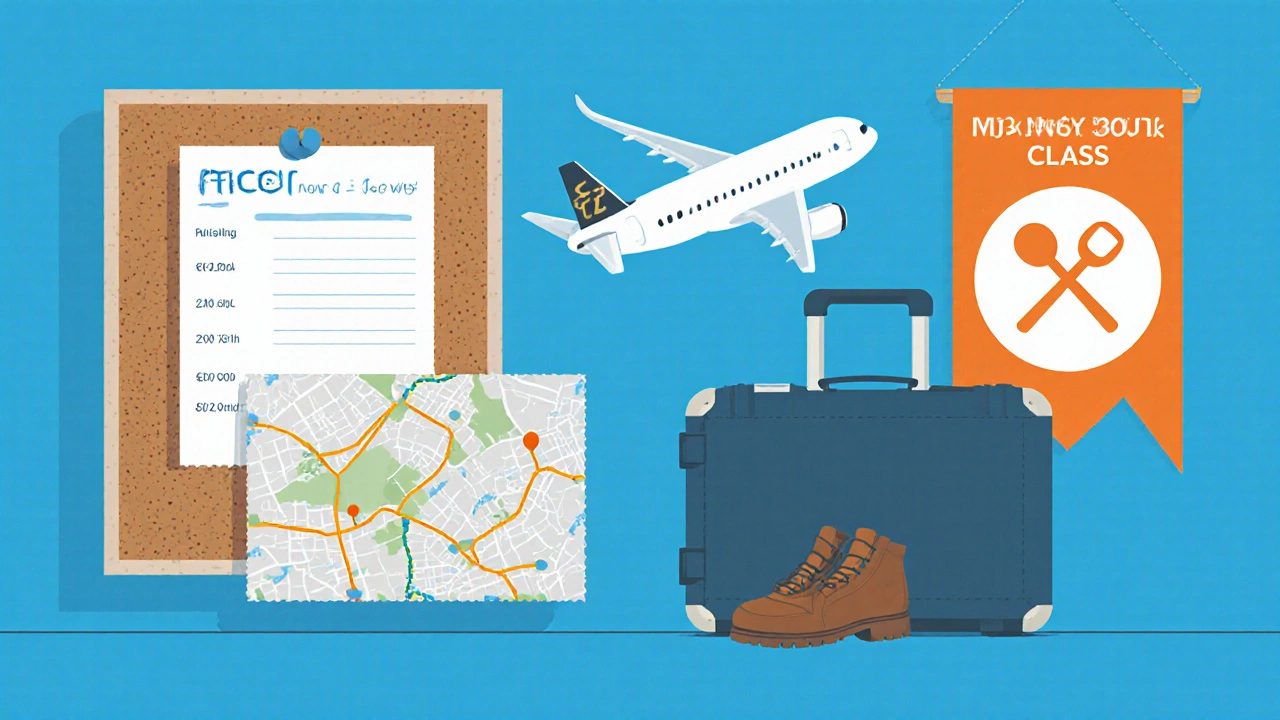Why People Love City Breaks: The Allure of Short Urban Getaways
 Oct, 15 2025
Oct, 15 2025
City Break Budget Calculator
Plan Your Perfect Urban Escape
Calculate your city break costs based on destination, duration, and accommodation type. See what fits your budget!
Ever wonder why a quick trip to a bustling metropolis feels like a mini‑vacation that recharges you faster than a beach holiday? The answer lies in the unique mix of culture, food, and convenience that city breaks offer. Below we unpack what makes these short urban escapes so irresistible and how you can craft one that fits your style.
Key Takeaways
- City breaks satisfy a craving for new sights without demanding weeks off work.
- They combine cultural immersion, culinary adventures, and nightlife in a compact package.
- Good planning-flight, transport, and flexible itinerary-maximises enjoyment and budget.
- Travelers prioritize authentic local experiences over generic tourist traps.
- A few common pitfalls-over‑packing, unrealistic schedules-can be avoided with simple tricks.
What exactly is a city break?
City break is a short, usually 2‑4‑day trip to a major urban destination, designed for leisure rather than business. It typically involves flying or driving to a city and spending the bulk of the time exploring its attractions, food scene, and nightlife before returning home. Think of it as a condensed city vacation that fits neatly into a long weekend.
Why do city breaks appeal to so many travelers?
Modern life is fast‑paced, and people crave bite‑size experiences that fit into busy schedules. A city break delivers on that need while still feeding the wanderlust.
Cultural immersion without the time commitment
Visiting a cultural attraction such as a museum, historic district, or street art gallery, offers a deep dive into a city’s heritage in a few hours. Whether you’re admiring Renaissance masterpieces in Florence or wandering the ancient souks of Marrakech, the intensity of a short visit often feels more vivid than a lengthier, less focused trip.
Foodies find a playground
Urban centers are culinary hotbeds. The gastronomy scene in a city brings together street food, fine dining, and everything in between, allowing travelers to sample a variety of flavors in a single outing. From a morning croissant in Paris to a night‑time ramen bowl in Tokyo, each bite becomes a story you can share.
Nightlife that never sleeps
When daylight fades, cities transform. The nightlife offers bars, clubs, live music, and cultural performances that keep the energy high well into the early hours. A short stay means you can experience a full night of entertainment without feeling torn from work the next day.
Convenient and often affordable
Many major cities are just a short‑haul flight or a quick train ride away. A short‑haul flight covers distances of up to 3,000 km, usually lasting under two hours, making it perfect for a weekend departure. Low‑cost airlines and early‑bird deals keep prices competitive, especially when you book a few weeks in advance.
Instant social media buzz
Snap a skyline at sunset, post a latte art shot from a hidden café, or share a bustling market scene-city breaks provide instantly recognizable backdrops that boost online engagement. That instant shareability adds a layer of excitement to the experience.

Planning a city break: the essential building blocks
Successful city breaks hinge on three practical pillars: transport, itinerary, and authentic experiences.
Getting there: short‑haul flights and public transport
The first step is choosing the right mode of arrival. A public transport network-comprising metro, tram, and bus services-often connects airports directly to city centres, saving you time and money. When flights land early in the morning, a direct train or express bus can whisk you straight to your hotel without the hassle of traffic.
Designing a flexible itinerary
A well‑crafted itinerary outlines the main activities for each day while leaving room for spontaneous detours, ensuring you don’t feel rushed. Start with a flagship attraction, then sprinkle in hidden gems-like a local market or a rooftop bar-based on personal interests.
Seeking authentic local experiences
Instead of sticking solely to guidebook highlights, aim for local experience activities that let you live like a resident-such as joining a cooking class, attending a community event, or strolling through a neighborhood park.. These moments create lasting memories and often become the stories you’ll recount later.
Motivation matrix: what draws people to city breaks?
| Motivation | Typical Activities | Emotional payoff |
|---|---|---|
| Culture | Museums, historic sites, street art tours | Feeling enlightened and connected to history |
| Food & Drink | Food markets, wine bars, cooking workshops | Sensory delight and discovery |
| Nightlife | Live music, clubs, night markets | Excitement and social connection |
| Convenience | Short flights, central hotels, easy transport | Stress‑free planning and quick recharge |
| Social Sharing | Photography spots, Instagram‑worthy meals | Pride and digital engagement |

Common pitfalls and quick fixes
Even a well‑planned city break can stumble. Here are the most frequent hiccups and how to dodge them.
- Over‑packing. Pack light-just a change of clothes, a pair of comfortable shoes, and a compact day‑pack. You’ll thank yourself when you navigate crowded subways without a suitcase.
- Trying to see everything. Prioritise 2‑3 must‑see attractions per day. Use the itinerary as a guide, not a rigid schedule.
- Ignoring local customs. A quick read on tipping etiquette or basic greetings can prevent awkward moments.
- Booking accommodation far from the centre. Choose a centrally located boutique hotel or a well‑rated Airbnb within walking distance of key sights. It cuts transit time dramatically.
- Missing out on free experiences. Many cities host free walking tours, museum evenings, or public concerts. Check the city’s tourism board website for a schedule.
Next steps: turn the idea into reality
Ready to book your next city break? Start by picking a destination that aligns with your top motivation-culture, food, nightlife, or convenience. Then:
- Search for a short‑haul flight under two hours; set price alerts to catch deals.
- Reserve a centrally located hotel or apartment.
- Map out a loose itinerary using travel blogs for hidden gems.
- Download the city’s public transport app for real‑time navigation.
- Schedule at least one local experience-a cooking class, market tour, or neighborhood walk.
Follow these steps, and you’ll be on your way to a refreshed mind, a fuller palate, and a few Instagram likes-all in under a weekend.
Frequently Asked Questions
How far in advance should I book a city break?
Aim for 4‑6 weeks ahead if you’re traveling during peak seasons. This window usually secures a good price on flights and central accommodation while still offering flexibility.
Is it better to stay in a hotel or an Airbnb for a short city trip?
Both have perks. Hotels provide concierge assistance and often include breakfast-great for tight schedules. Airbnbs can give you a local feel and kitchen facilities, which saves on meals. Choose based on your priority: service vs. home‑like atmosphere.
Can I do a city break on a shoestring budget?
Absolutely. Opt for budget airlines, stay in hostels or budget hotels, and rely on street food and free attractions. Many European cities offer free museum days once a month-plan your visit around those dates.
What’s the ideal length for a city break?
Two to four nights works best. It gives you enough time to explore main sights, try local food, and enjoy nightlife without feeling rushed.
How can I make my city break more sustainable?
Use public transport, stay in eco‑certified accommodations, and choose vegetarian or locally sourced meals. Supporting local artisans and walking tours also reduces carbon footprints.
